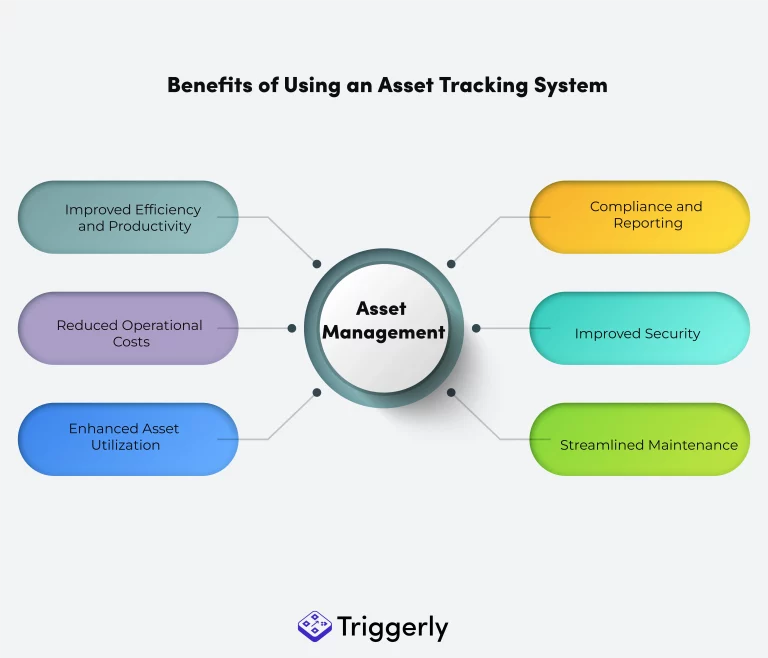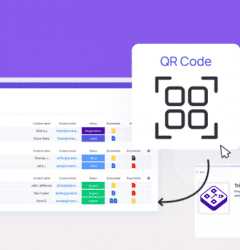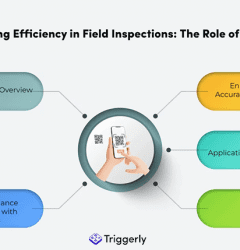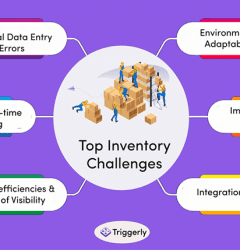Introduction:
In the current dynamic and rapidly evolving business landscape, maintaining high levels of efficiency is essential for sustaining a competitive edge. A highly effective method to enhance your business’s operational efficiency is by implementing asset tracking systems. These advanced systems empower businesses to meticulously monitor their assets, optimize operational workflows, and make informed, data-driven decisions. By leveraging real-time insights and streamlined processes, asset tracking systems enable businesses to maximize productivity, reduce costs, and enhance overall performance.
What is an Asset Tracking System?
An asset tracking system is a method used to track the physical assets of a business. This includes equipment, tools, machinery, and inventory. By using technologies such as barcodes, QR codes, RFID, and GPS, businesses can monitor their assets in real-time. This not only helps in locating assets but also in managing maintenance schedules, optimizing asset utilization, and ensuring compliance.
Benefits of Using an Asset Tracking System

1. Improved Efficiency and Productivity
Asset tracking systems automate the task of monitoring and managing assets, greatly minimizing the time employees spend locating tools or equipment. With precise information on an asset’s current location, last usage, and upcoming maintenance needs, businesses can optimize asset utilization. This comprehensive visibility into asset status ensures that resources are used efficiently, leading to enhanced productivity and overall operational efficiency.
2. Reduced Operational Costs
When you have real-time visibility into your assets, you can reduce unnecessary purchases and avoid duplicate assets. Additionally, proper maintenance schedules can prevent costly breakdowns. By optimizing asset usage, you can extend the lifespan of your equipment, saving money in the long run.
3. Enhanced Asset Utilization
Asset tracking systems provide detailed insights into how often and how long assets are used. This data can help you understand asset utilization patterns, identify underused assets, and make informed decisions about asset allocation and future investments.
4. Streamlined Maintenance
Regular maintenance is crucial for the longevity and efficiency of your assets. An asset tracking system can help schedule and track maintenance activities, ensuring that all equipment is serviced on time. This reduces the risk of unexpected breakdowns and keeps your operations running smoothly.
5. Compliance and Reporting
Many industries have strict regulatory requirements regarding asset management. An asset tracking system can help you maintain compliance by keeping accurate records of asset use, maintenance, and inspections. This can be particularly useful during audits and inspections.
6. Improved Security:
Knowing the exact location of your assets at all times can significantly improve security. Asset tracking systems can help prevent theft and unauthorized use by providing real-time alerts if an asset is moved unexpectedly or taken to an unauthorized location.
How to Implement an Asset Tracking System?
1. Identify Your Needs:
The first step in implementing an asset tracking system is to identify your business’s specific needs. Determine what assets you need to track, the level of detail required, and the technology that best suits your needs (e.g., barcodes, QR codes, RFID, GPS).
2. Choose the Right Solution:
There are many asset tracking solutions available on the market. When selecting a system, it’s essential to choose one that is scalable, user-friendly, and compatible with your existing infrastructure. Within the monday.com operating system, Triggerly provides an exceptional solution featuring QR Tracking. Triggerly can be customized to meet the specific requirements of your business, ensuring seamless integration and optimal performance.
3. Set Up Your System:
Once you have chosen a solution, the next step is to set up your system. This involves tagging your assets, configuring the software, and training your staff. Triggerly on monday.com makes it easy to generate and assign QR codes to your assets, while it helps streamline workflows and automate processes.
4.Train Your Team:
Proper training is crucial for the successful implementation of an asset tracking system. Ensure that your team understands how to use the system, the importance of accurate data entry, and the benefits it brings to the business.
5. Monitor and Optimize:
After implementation, continuously monitor the performance of your asset tracking system. Use the data generated to identify areas for improvement, optimize asset utilization, and make informed decisions. Regularly update your system and processes to keep up with changing business needs.
Real-World Applications
Manufacturing:
In manufacturing, asset tracking systems can monitor the location and condition of tools, machinery, and inventory. This helps in maintaining optimal production levels, reducing downtime, and ensuring that equipment is serviced regularly.
Healthcare:
Hospitals and healthcare facilities use asset tracking systems to manage medical equipment, ensure compliance with regulatory standards, and improve patient care. Tracking the location and usage of medical devices ensures that critical equipment is always available when needed.
Construction:
Construction companies can benefit from asset tracking by managing tools and heavy machinery across multiple job sites. This reduces the risk of theft, improves equipment utilization, and ensures that maintenance schedules are followed.
Logistics and Transportation:
In the logistics and transportation industry, asset tracking systems are used to monitor the location and condition of vehicles, cargo, and other assets. This helps in optimizing routes, reducing fuel costs, and improving delivery times.
Conclusion:
An asset tracking system is a valuable tool for any business looking to optimize operations, reduce costs, and improve efficiency. By providing real-time visibility into assets, these systems help streamline processes, ensure compliance, and enhance security. Triggerly on monday.com offers a comprehensive solution that is easy to implement and use, making it an excellent choice for businesses of all sizes.
Investing in an asset tracking system is a smart move that can yield significant returns in terms of efficiency, cost savings, and improved asset management. Triggerly offers a comprehensive asset tracking solution that combines QR Tracking within monday.com. This powerful combination allows businesses to easily tag and track their assets using QR codes, while Triggerly automates workflows and streamlines processes.
Start optimizing your assets today with Triggerly. For more information, click here.
By incorporating these steps and insights, businesses can leverage asset tracking systems to their advantage, driving efficiency and productivity to new heights.
Recent Posts
- How to use Smart Columns to identify key dates like holidays and label them automatically for better resource allocation on monday.com boards
- How to use Smart Columns to never miss an SLA target again on your monday board
- How to use Smart Columns for Casting advanced formulas into standard columns
- How to use Smart Columns to set regional numbers & dates formatting on your monday.com boards
- How to use Smart Columns to enforce conditional logic to monday.com board status columns
- How to use Smart Columns to validate any phone number stored in your monday.com phone board column
- How to use Smart Columns to enforce Mandatory Columns to any standard column on monday.com board


